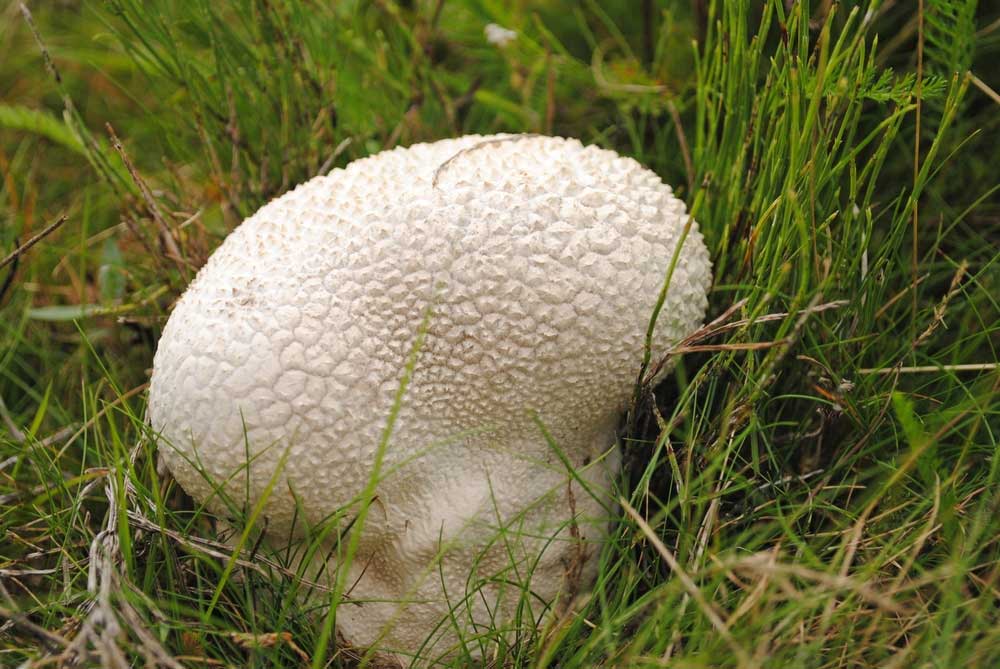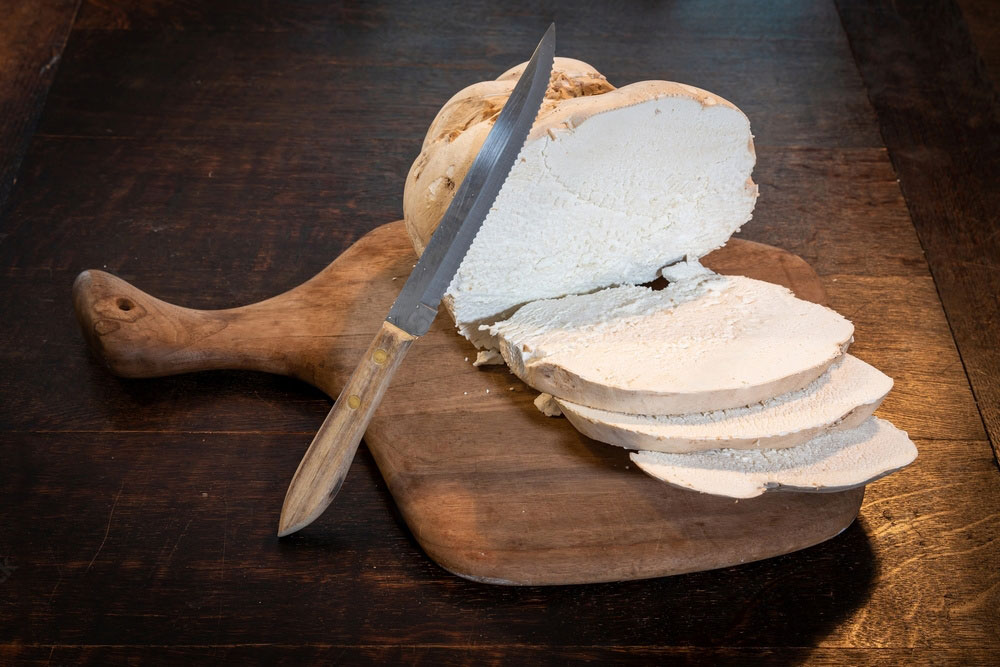The Meadow’s Marvel: Unveiling the Giant Puffball
While foraging across the expansive meadows around Marblehill, you might stumble upon a surprising sight: a giant, white orb nestled amongst the tall grasses. This is the Calvatia gigantea, also known as the giant puffball, a fascinating fungus that adds a touch of wonder to Marblehill’s open spaces.
A Gentle Giant in Marblehill’s Meadows
Unlike its woodland cousin, the Calvatia gigantea thrives in open areas like pastures, lawns, and meadows. These colossal fungi can reach impressive sizes, often resembling basketballs or even beach balls. Imagine these gentle giants dotting the meadowlands around Marblehill, adding a whimsical touch to your next nature walk.
While they might appear otherworldly, Calvatia gigantea are saprobes. These decomposers play a crucial role in breaking down dead organic matter and returning nutrients to the soil, promoting a healthy ecosystem for the plants and animals that call Marblehill home.
A Delicacy When Young: The Truth About the Giant Puffball
The Calvatia gigantea has a long and fascinating history when it comes to edibility. However, extreme caution is crucial! In their early stages, when the flesh is white, firm, and free of any yellowing or browning, they are considered a delicacy by some. Their flesh has a pleasant mushroom flavour, often described as nutty or meaty, and can be enjoyed in various dishes.

Here’s why caution is crucial:
- Look-Alikes: Several poisonous mushrooms closely resemble the Calvatia gigantea in its very early stages. Misidentification can have serious consequences.
- Spore Dispersal: As the Calvatia gigantea matures, the white flesh develops a brown, powdery spore mass. Inhaling these spores can irritate the lungs.
Therefore, only consume the Calvatia gigantea if you are 100% certain about its identification and the flesh is entirely white. When in doubt, leave it out!
A Culinary Adventure (For the Experienced): Savor the Gentle Giant
For the experienced forager who has confidently identified a young Calvatia gigantea, a delightful culinary adventure awaits! Here’s how to transform this gentle giant into an exceedingly tasty treat:
- Slice it Thick: Use a sharp knife to cut the giant puffball into slices roughly ½ inch thick. Discard any part of the flesh that shows even the slightest hint of yellow or brown.
- Season Simply: These delicate mushrooms don’t require a lot of fuss. A sprinkle of salt, pepper, and perhaps a drizzle of olive oil is all you need to enhance their natural flavour. For a touch of smokiness, try adding a pinch of paprika or smoked paprika.
- Pan-Fried Perfection: Heat a pan over medium heat and add a pat of butter or a drizzle of oil. Once hot, gently fry the puffball slices until golden brown and cooked through. The key here is to avoid overcooking them – you want them to retain their meaty texture.

The result? A tender, meaty texture with a subtle, nutty flavour that can be enjoyed on its own, or incorporated into various dishes. Imagine them diced and sauteed with onions and garlic for a flavorful omelette filling, or chopped and added to a creamy risotto for an earthy depth.
Remember, this culinary adventure is for experienced foragers only. If you are unsure about the identification of the Calvatia gigantea, admire it from afar and leave the foraging to the experts.
A Marvel to Observe: A Fungal Giant Steeped in History
Even if you’re not planning on incorporating giant puffballs into your next meal, they offer a delightful spectacle in Marblehill’s meadows. Their presence has sparked curiosity and woven itself into folklore for centuries.
- Giants in Folklore: In some cultures, the giant puffball’s impressive size led to associations with giants or mythical creatures. Their sudden appearance and ability to puff out clouds of spores when stepped on might have fueled these stories.
- A Natural History Wonder: The giant puffball’s reproductive process is a marvel of nature. As they mature, the internal flesh breaks down into a powdery mass of spores. When the outer skin weakens or is broken, even by a light touch, these spores are released in a puff, ensuring the giant puffball’s legacy continues.
The Gentle Giant’s Call to Action: Respect and Conservation
The Calvatia gigantea is a fascinating and unique resident of Marblehill’s meadows. If not having one for your dinner, you can appreciate them from afar and leave them undisturbed, thus helping to ensure their continued presence for future visitors to enjoy. Here’s how you can be a responsible steward of Marblehill’s natural wonders:
- Leave No Trace: Marblehill’s expansive meadows are a haven for a variety of flora and fauna. The giant puffball plays a crucial role in this ecosystem by decomposing organic matter. Respect the delicate balance by leaving no trace of your visit. Admire the puffballs from a distance and avoid picking them, allowing them to complete their lifecycle and disperse their spores.
- Walk the Designated Paths: Marblehill offers some public accessible paths that wind through to meadows. Sticking to these paths helps protect the delicate meadow ecosystem, including the Calvatia gigantea, from unnecessary trampling. This ensures a healthy habitat for all the plants and animals that call Marblehill home.
- Citizen Science: Are you curious to learn more about the Calvatia gigantea and its role in Marblehill’s meadows? Consider becoming a citizen scientist! There are organizations dedicated to the study of fungi that welcome citizen participation. You can help contribute valuable data by logging your sightings of giant puffballs and other fungi using online platforms or mobile apps. This information can be crucial for researchers who are studying fungal populations and their impact on ecosystems.
- Spread Awareness: The Calvatia gigantea is a conversation starter! Share your encounter with this gentle giant on social media, tagging Marblehill and using relevant hashtags related to nature and fungi. By raising awareness about these fascinating organisms, you can help promote their conservation and inspire others to appreciate the beauty of the natural world at Marblehill.
Remember: Most of Marblehill’s meadows are privately owned, so always obtain permission first! By following these simple guidelines, you can ensure a positive experience for yourself and your environment.




